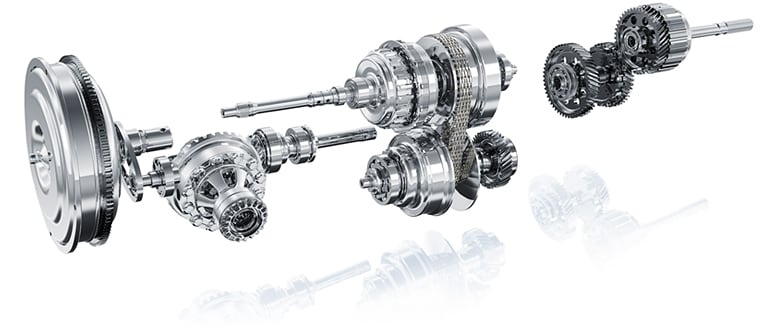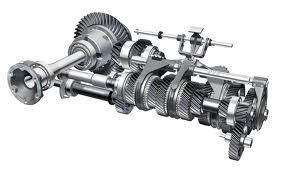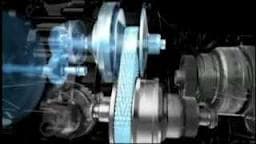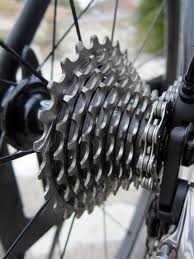2011 Subaru Outback Transmission Continuous Variable Transmission
Subaru Lineartronic® Continuously Variable Transmission (CVT)

For instant, seamless response to changing conditions, the redesigned Lineartronic Continuously Variable Transmission elevates efficiency of the BOXER engine and Symmetrical AWD by keeping the engine in its ideal power range. Featuring a reinforced transmission case and new torque converter, Lineatronic delivers a smoother ride while also reducing mechanical noise during operation. Adaptive control automatically shifts to the most optimal gear to suit any driving style and road condition, while a stepped variable control is in tune with changes in engine speed, maximising drivability and performance.
Lineartronic is designed for linear response, and of course predictable driving means more fun behind the wheel. Yet there is more than simply selecting the most appropriate gear ratio. Another advantage of CVT is that it allows the engine to operate longer at a lower speed than conventional automatic transmission systems. A lower engine speed means better fuel economy. And CVTs also deliver a smoother ride, as it eliminates shocks when changing gears, and allows the engine to run quieter.
| Regular Transmission | Lineartronic CVT |
This is what your bicycle looks like: | Subaru's continuously variable |
 Regular transmission cutaway-- See the fixed gears? |  Lineartronic CVT cutaway-- just pulleys that vary their width. |
First of all, how does a regular transmission with gears work?
Remember the ten-speed bicycle you rode as a teen? On the back wheel, there were different size gears. A human can only pedal so fast, and with so much power, so to make the most of your effort you used different gears for different speeds. Uphill, when you needed all your power at a slow speed, you used the wide gear. Downhill, when you were already cruising fast, you needed the narrow gear to go even faster. Traditional transmissions in vehicles employ the same principle. The transmission shifts gears to provide the most appropriate ratio for a given situation: lowest gears for starting out, middle gears for acceleration and passing, and higher gears for fuel-efficient cruising. Most vehicles with conventional gears have four or five different speeds.
How does the CVT compare to a regular geared transmission?
The controls are the same inside the car: t wo pedals (no clutch) and a P-R-N-D-L-style shift pattern. But instead of gears, the CVT has two pulleys that can vary in width, and a steel belt that connects them. By getting narrower or fatter, these pulleys change the relationship of engine speed to car speed. And because these pulleys can vary their width infinitely, they are "continuously variable." When driving a car with a CVT, you never hear or feel the transmission shift -- it simply raises and lowers the engine speed as needed, calling up higher engine speeds (or RPM) for better acceleration and lower RPM for better fuel economy while cruising.
What does a CVT feel like when driving?
Many people don't notice the difference. Modern cars with regular transmissions shift so smoothly that you don't really feel the gears changing. You may notice a difference if you pay close attention. With a CVT, there are no gears, period, so you hear the engine rev when you press the accelerator but you never feel any power interruption as the gears change. The engine finds its power band, and the transmission keeps the gear ratios married to that sweet spot for maximum power and fuel efficiency.
What does it do for me?
- Power. Engines do not develop constant power at all speeds; they have specific speeds where torque (pulling power) and horsepower (speed power) are at their highest levels. The CVT finds that exact spot and stays right there.
- Fuel economy. For example, for the 2014 Forester, Subaru introduced a CVT. With the same engine as the previous generation, the new Forester gets FIVE (!) more mile per gallon. The CVT finds the most fuel efficient point in the engine power band and keeps it there. The fuel economy is so impressive with a CVT that it beats the manual transmission!
- Less w eight. Without that heavy gearset and all those extra parts, a CVT has less mass, which helps fuel economy, handling, and acceleration.
- Acceleration speed. A regular transmission can't continue to apply power while the transmission is shifting because it would damage it. The CVT is designed to send power to the wheels without any interruption.
- Smoother accel eration. A regular transmission can feel jerky, especially under full throttle. The CVT builds power in a smooth, linear manner, hence the trademark, "Lineartronic."
- G reater reliability. The CVT has fewer parts to break.
- Manual mode when you need it . If you're towing, or you just want the thrill of changing gears, Subaru gives you paddle shifters mounted right behind the steering wheel so you can choose from six preset "gears" (which are not really gears but just programmed set points along the continuum). Excludes Forester.
Source: https://www.sportsubaru.com/subaru-cvt-explained.htm


0 Response to "2011 Subaru Outback Transmission Continuous Variable Transmission"
Postar um comentário